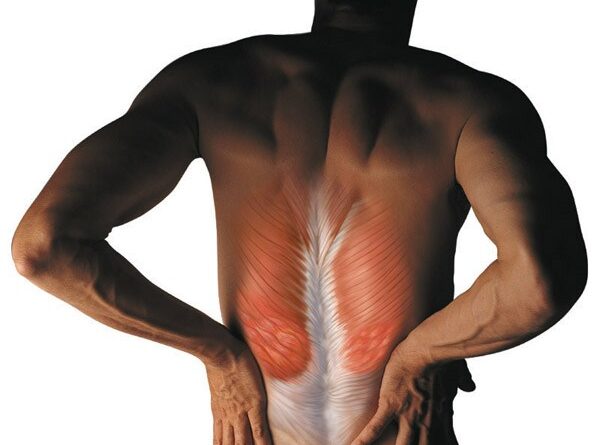Low Back Pain: Causes, Diagnosis, and Treatment
Daftar Isi
Understanding Lower Back Pain
Low back pain is a common condition that affects lots of individuals worldwide. It is a major source of pain, decreased movement, and a worse quality of life. Understanding the origins, diagnostic procedures, and treatment choices is critical to treating and easing this widespread problem.
Etadol 100mg is an effective medication recognized for its ability to relieve pain and inflammation. This medication’s primary component, Etadol, provides comfort to those suffering from a variety of pain, including arthritis, migraines, and post-operative pain. Understanding how Etadol 100mg works and its advantages is critical for people looking for effective pain relief options.
Causes of Lower Back Pain:
Muscle Strain and Ligament strain
Muscle strains or ligament sprains are among the most prevalent causes of low back discomfort. This is generally caused by rapid movements, inappropriate lifting of big things, or overuse. These injuries cause inflammation and muscular spasms, resulting in discomfort and stiffness.
Herniated disc.
A herniated disc, also known as a slipped or ruptured disc, occurs when the soft material inside a spinal disc pushes through a rip in the sturdier outer layer. This may compress surrounding nerves, causing discomfort, numbness, or weakness in the lower back and legs.
Degenerative disc disease.
As we age, the discs between our vertebrae lose moisture and suppleness. This degenerative process may cause the discs to contract or collapse, resulting in greater friction and discomfort in the lower back. Degenerative disc disease is a prevalent cause of persistent low back pain in elderly people.
Spinal Stenosis.
Spinal stenosis is a narrowing of the spinal canal that may cause pressure on the spinal cord and nerves. This ailment often causes discomfort, numbness, and weakness, particularly while standing or walking for long periods of time.
Sciatica
Sciatica is defined by pain radiating down the route of the sciatic nerve, which runs from the lower back to the hips and buttocks and down each leg. This ailment is often caused by a herniated disc or bone spur crushing a portion of the nerve.
Spondylolisthesis
Spondylolisthesis occurs when a vertebra slides forward over the one under it, altering the spine’s alignment and causing discomfort. This issue may be caused by a congenital abnormality, an accident, or degenerative changes in the spine.
Other Causes
Infections, tumors, kidney stones, and inflammatory disorders such as ankylosing spondylitis are all possible causes of lower back discomfort. These illnesses are less prevalent, but they should be included in a full diagnosis.
Asmanol 100 mg is a medicine used to relieve pain. It includes a particular active component that is intended to relieve many forms of pain, including acute and chronic pain. The actual content of Asmanol may vary based on the manufacturer and region of distribution. Typically, such drugs are used to treat muscular pain, joint pain, and postoperative pain.
Diagnosing Lower Back Pain
Medical History and Physical Examination.
The first step in diagnosing low back pain is to take a complete medical history and do a physical examination. Healthcare experts evaluate a patient’s symptoms, medical history, and lifestyle variables. During the physical examination, they look for symptoms of nerve injury, muscular weakness, and range of motion restrictions.
Imaging tests include X-rays.
X-rays may detect bone anomalies, fractures, and spinal alignment concerns. While they do not reveal soft tissues such as muscles and discs, they are valuable in ruling out alternative possibilities.
MRI scans provide comprehensive pictures of soft tissues including muscles, discs, and nerves. This test is very effective for detecting herniated discs, spinal stenosis, and other soft tissue issues.
A computed tomography (CT) scan
CT scans provide comprehensive cross-sectional pictures of the spine, which may aid in detecting bone abnormalities and soft tissue concerns. CT scans are often utilized when an MRI is not an option.
Bone Scans.
Bone scans can identify bone infections, fractures, and malignancies. This test includes injecting a tiny quantity of radioactive material into the bloodstream and obtaining photographs to detect aberrant bone activity.
Nerve Studies
Electromyography (EMG).
EMG records the electrical activity of muscles and nerves. It helps to evaluate whether nerve compression or injury is causing muscular weakness or numbness.
Nerve Conduction Studies.
These tests examine the speed and intensity of electrical impulses as they pass through nerves. They are often used with EMG to identify nerve-related causes of low back pain.
Tapentadol, an opioid analgesic used to treat moderate to severe pain, is marketed under the brand name Noosanta 100 mg. Tapentadol acts as a μ-opioid receptor agonist and norepinephrine reuptake inhibitor, altering the brain’s reaction to pain and delivering excellent pain relief.
Treatment Options for Low Back Pain: Conservative Treatments
Rest and Activity Modification
In many situations, low back pain may be treated with rest and avoiding activities that aggravate it. To avoid muscular deconditioning, resume to regular activities gradually when pain resolves.
Over-the-counter pain medications, such as acetaminophen and NSAIDs, may alleviate discomfort and inflammation. In certain circumstances, physicians may prescribe harsher drugs, such as muscle relaxants or opioids, to provide temporary relief.
Physical Therapy
Physical therapy exercises and stretches aim to enhance flexibility, strength, and posture. To relieve pain and inflammation, therapists employ treatments such as heat, cold, and ultrasound.
Chiropractic Care
Chiropractors utilize spine manipulation and other manual procedures to enhance spinal alignment and pain relief. Chiropractic therapy may help with some forms of low back pain, especially those caused by muscular tension or joint dysfunction.
Acupuncture
Acupuncture involves placing small needles into particular places on the body to alleviate pain. Some research indicate that acupuncture may be an effective therapy for persistent low back pain.
Interventional treatments.
Steroid injections.
Corticosteroid injections may decrease inflammation and give short relief for severe pain. These injections are often used to treat herniated discs and spinal stenosis.
Radiofrequency ablation
Radio waves produce heat, which is then used to kill nerve fibers that convey pain signals. Radiofrequency ablation may give long-term relief from persistent low back pain.
Surgical treatments
Discectomy is a procedure that removes a herniated disc to alleviate nerve pressure. This operation is often used when conservative therapy fail to alleviate symptoms.
Laminectomy
Laminectomy is the removal of a portion of the vertebrae known as the lamina to alleviate pressure on the spinal cord or nerves. This is a typical treatment for treating spinal stenosis.
Spine Fusion
Spinal fusion is the process of connecting two or more vertebrae together to reduce mobility. This operation may be useful for spondylolisthesis and severe degenerative disc degeneration.
Preventing Low Back Pain with Exercise. Regularly
Regular physical activity, such as strength training, aerobic activities, and stretching, may help keep your spine healthy and avoid low back discomfort. Core-strengthening activities are very effective for supporting the lower back.
Maintain a healthy weight.
Carrying extra weight, particularly around the belly, may place additional pressure on the lower spine. A balanced diet and regular exercise may help you maintain a healthy weight and lower your chances of developing low back pain.
Practice good posture.
Maintaining appropriate posture when sitting, standing, and lifting may help to reduce lower back discomfort. Ergonomic modifications to workstations and the use of supportive seats may also assist.
Lift properly.
When carrying big goods, utilize your legs instead of your back. Keep the thing close to your body, bend your knees, and refrain from twisting your spine.
Avoid prolonged sitting.
Prolonged sitting, especially with bad posture, may lead to low back discomfort. Regular pauses to stand, stretch, and move about may help lower this risk.
Conclusion
Low back pain is a complex illness that has several causes, diagnostic procedures, and treatment choices. Individuals who understand the underlying causes and get proper therapy may successfully control their symptoms and enhance their quality of life.



